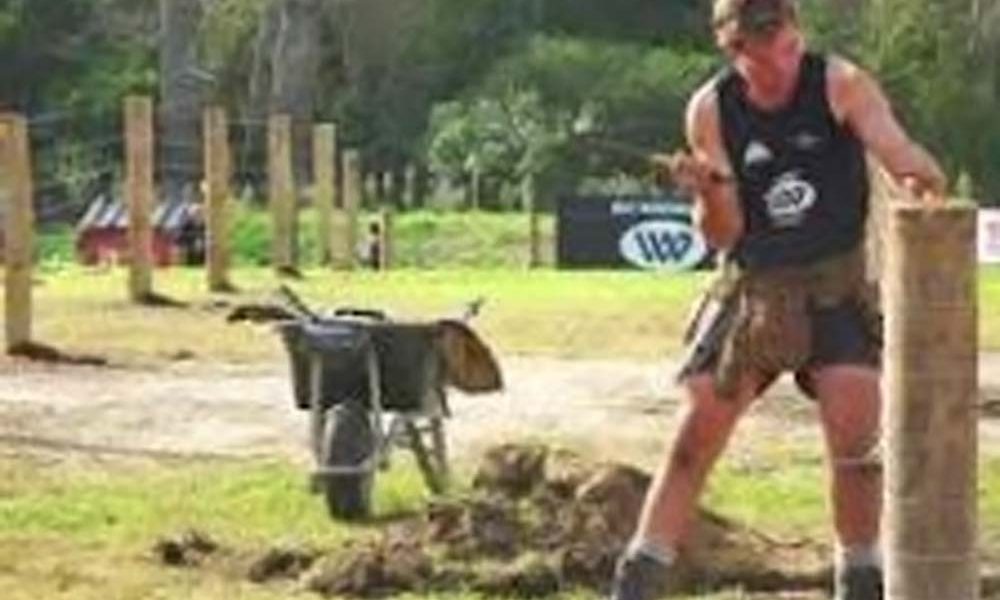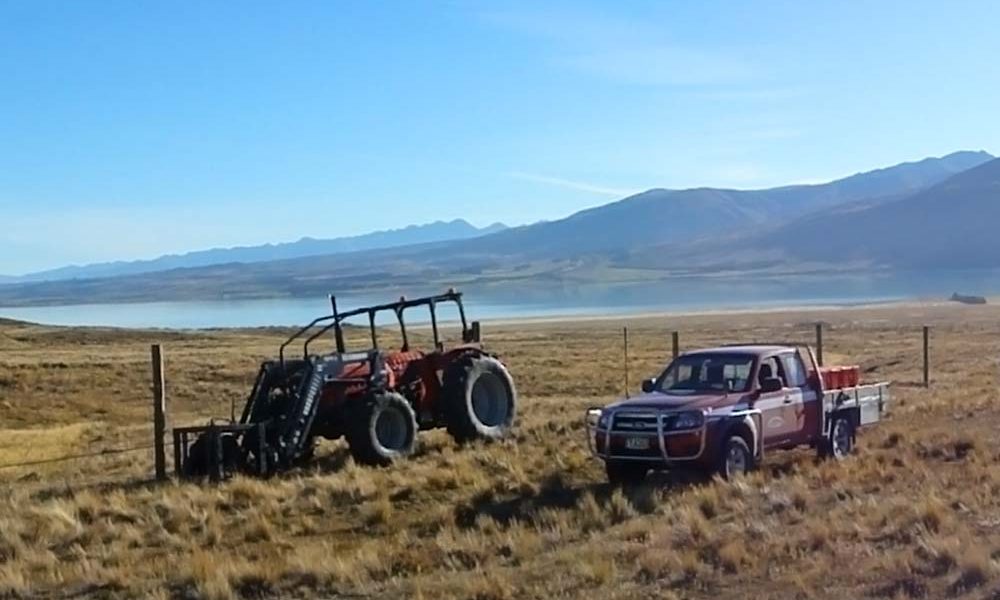
Moving on from stays, NZFC committee member and competition judge Wayne Newdick runs you through how he does tie backs.
In summary, a breast plate is used for 2 or 3 reasons as opposed to a stay.
(1) The deflection in the fence is so slight a stay is not required
(2) The stay may interfere with or limit access for stock or vehicles
(3) There is no room and practically impossible to use a stay or conventional breast plate.
The method I am going to explain, I have used for over 15 years using various types of cables and wire.
I now use an 8mm galvanized rod which I make with eyes at each end.
One bit of advice I would give: If you are unsure when to use a stay or breast plate I always measure the deflection early on the fence construction, this is done by simply measuring 4mtrs past the angle in a straight line of the fence then measure back to the actual line (Figure 1).
- 2 feet between the lines with a 2.1 angle and half a 1.8 half round will hold in all but wet ground.
- 3-4 feet will hold in good ground.
- To go beyond 4ft both angle and breast plate should be increased in size and length.
- I would not go past 6ft with this method as there is simply too much loading.
Tie back
There are situations when you have little choice – especially on tracks where a conventional breast plate or stay will not work.
The method that I have found very successful is a tie back under the ground. A brief explanation as to how it works:
A 1.8 post driven into the ground, 1.6mtrs in most soil types will require 1-2 tonnes to lift out, but 500kg applied horizontally to the top would move, bend or even break the post.
My method simply uses vertical lift (i.e.) 1-2 tonne and convert this to horizontal pull.
Photo 1: shows tie back in place and 450mm of half round in place and 1.8 Q2
Photo 2: is a look from above
Photo 3: is everything dug in place
Photo 4: shows the way this works. The 1.8 must be angled and the top leant to the angle
Photo 5: post driven down to the bottom of the mast
Photo 6: I use this device to drive the post up to 500mm underground.
Photo 7: this shows a gate type staple driven in 200 from the top.
Photo 8: this shows the top of the 1.8 driven 300-400mm below the ground.
I simply keep driving until I get 50-70mm of layback on the angle.
Summary
- If the ground is soft simply increase the size of the 1.8 to 2.4-2.7 and the half round to 900 or so, angle 2.1-2.4 etc.
- This system can be done with 4mm or 4.5mm wire or stainless with a minimum of two wraps and crimped (use two crimps because of the stock loading).
- Don’t drive the angle with layback because this is obtained with relative ease when driving the tie back.
- This system requires minimal digging, takes advantage of a postdriver and holds better than a conventional breastplate.
- Give this a go you may be surprised.
Written by Wayne Newdick
Wayne Newdick is a notable top fencer, widely recognised in the industry for his high standards and ingenuity.
Published in the Training & Events Feature in WIRED Issue 68 / March 2023 by Fencing Contractors NZ
Follow us on Facebook
© Fencing Contractors Association NZ (FCANZ)












